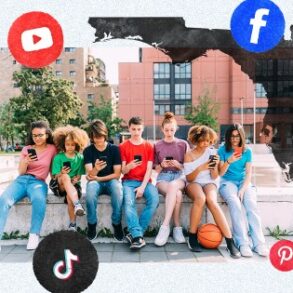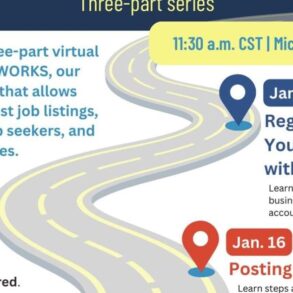
As the United States government considers major policy decisions regarding social media, including a potential forced sale of TikTok and new legislation to protect young users, the comprehensiveness of research informing these decisions faces scrutiny.
A 2024 report from the National Academies of Sciences, Engineering, and Medicine (NASEM) on “Social Media and Adolescent Health” may help shape those decisions, but a Rutgers Health believes the panel needed to include more public health experts and to consider more study results.
Jon-Patrick Allem, an associate professor at the Rutgers School of Public Health, discussed the NASEM report in a recent American Journal of Public Health editorial. He laid out his ideas for improvement with Rutgers Today.
How could panel membership have been better?
The NASEM appointed only one person from a school of public health to this committee. This is a significant oversight because public health scholars have a rich history of studying how private sector activities, including those of social media companies, affect people’s health.
I’m also concerned that two experts on the committee have received industry funding. These conflicts of interest can reduce the integrity of the committee report. Those trained in public health, especially in areas like tobacco control and alcohol prevention, understand the importance of qualifying research from industry-funded scientists.
What sort of studies were considered by the panel?
There was a narrow focus on screen time and mental health outcomes. Many studies included in the report use blunt measures of social media use, generally time spent on platforms, without considering the specific content user’s view. The outcomes are usually limited to mental health issues such as depression and anxiety.
This approach misses crucial aspects of how social media affects adolescent health. Time alone doesn’t tell us much – one could spend hours watching educational videos or hours watching content that glamorizes substance use. These experiences would have very different impacts, but studies measuring only time on social media would treat them equally.
What extra study results would have improved the report?
The report overlooked several critical pieces of evidence, particularly studies on how specific content on social media platforms can affect offline attitudes and behaviors in young people. For example, meta-analyses show associations between exposure to pro-alcohol content on social media and offline alcohol use among adolescents. Similar studies exist for tobacco and unhealthy food content.
These content-focused studies provide crucial insights into how social media influences adolescent behavior beyond just mental health outcomes. By omitting this evidence, the report fails to provide a comprehensive assessment of the relationship between social media and adolescent health.
What should happen going forward to collect better information?
First, we need more transparency from social media companies. They should be required to disclose the materials that guide content moderation. This would allow for more meaningful scrutiny.
Finally, we need a broader, more holistic approach to studying social media’s impact on adolescent health. This means looking beyond just mental health outcomes to consider how social media exposure affects various health behaviors, from substance use to nutrition to body image.
How should this information inform future government policy?
Policymakers need to consider the full range of ways social media can impact adolescent health, not just screen time or mental health outcomes. They should push for greater transparency from social media companies about the content on their platforms, including what kind of potentially harmful content exists, how prevalent it is and how easily adolescents can see it.
We should also fund comprehensive, interdisciplinary research on social media’s impact on adolescent health. This research should inform evidence-based policies that can effectively protect young people while still allowing for the potential benefits of social media use.
By taking these steps, we can develop a more nuanced and effective approach to regulating social media and protecting adolescent health in the digital age.








